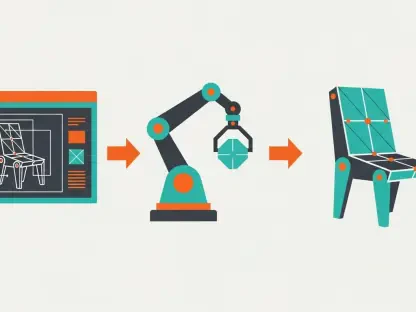ethCalifornia has emerged as a trailblazer in regulating artificial intelligence (AI) within the workplace, responding to growing concerns over bias, privacy violations, and fairness in employment decisions. As AI tools become deeply embedded in processes like hiring, promotions, and performance evaluations, the state has introduced a series of groundbreaking laws and regulations to protect workers’ rights. Spearheaded by entities such as the California Civil Rights Council (CCRC) and the California Privacy Protection Agency (CPPA), these measures aim to ensure that technological advancements do not compromise equity or ethical standards. The urgency of this regulatory push is clear, as unchecked AI systems risk perpetuating discrimination or eroding personal privacy with minimal human oversight. This article delves into the core components of these pioneering rules, examining their implications for employers and employees while shedding light on how California is shaping the future of work through a balanced approach to innovation and responsibility.
Addressing Bias and Discrimination in AI Tools
California’s latest regulations place a strong emphasis on curbing discrimination and bias embedded in automated decision-making systems. The CCRC’s Automated-Decision Systems (ADS) regulations, alongside the CPPA’s Automated Decisionmaking Technology (ADMT) rules, explicitly aim to prevent unfair impacts on protected groups defined by characteristics like race, gender, or disability. Under the California Fair Employment and Housing Act (FEHA), even unintentional bias—often referred to as disparate impact—can lead to legal consequences for employers. This means that businesses must thoroughly evaluate their AI tools to ensure they do not unintentionally disadvantage certain demographics. The focus on proactive measures highlights the state’s commitment to fairness, urging companies to adopt strategies that identify and address biases before they affect hiring or other employment outcomes, setting a high standard for accountability across industries.
Beyond the legal framework, the implications of these anti-bias measures are far-reaching for workplace equity. Employers are now responsible for not only implementing AI systems but also ensuring these tools align with anti-discrimination principles. This involves regular audits and testing to detect potential disparities in how decisions are made, whether in resume screening or performance assessments. The CCRC has suggested that conducting anti-bias testing could serve as a defense against discrimination claims, offering a practical pathway for compliance. Meanwhile, the broader societal impact cannot be ignored, as these regulations aim to build trust in AI by showing that technology can be used without compromising fairness. For employees, this represents a crucial step toward protection from systemic inequities that might otherwise go unnoticed in opaque automated processes, reinforcing California’s role as a leader in ethical tech governance.
Transparency and Accountability Mandates
Transparency is a cornerstone of California’s new AI employment laws, ensuring that employees and job applicants are informed about the role of technology in decisions affecting them. Under CPPA guidelines, employers must provide clear notices when AI tools are used in processes like hiring or promotions, and in certain cases, offer opt-out options for those who prefer human-driven evaluations. This requirement empowers individuals by giving them insight into how their data is processed and how outcomes are determined. Additionally, businesses are required to maintain detailed records to demonstrate compliance with these rules, creating a traceable framework for accountability. Such measures are designed to build confidence in AI systems by ensuring that their application in the workplace is not hidden but is instead open to scrutiny and understanding.
Accountability goes beyond mere notification, as the CPPA also mandates a Pre-use Notice and access rights, allowing individuals to understand the specific ways AI influences their employment status. This level of disclosure is vital for fostering an environment where workers feel their rights are respected, even as automation becomes more common. Employers, on the other hand, must adapt to these strict requirements by updating their HR practices and ensuring that their use of technology meets legal expectations. The emphasis on record-keeping further highlights the state’s intent to hold businesses responsible for any misuse of AI, as these documents can be reviewed during audits or legal challenges. By embedding transparency into these regulations, California aims to balance leveraging AI’s potential with protecting the personal and professional interests of its workforce, setting a precedent for other states to follow.
Proactive Risk Mitigation and Compliance
California’s approach to AI regulation is notably forward-thinking, encouraging businesses to address potential issues before they escalate into significant harm. The CCRC advocates for anti-bias testing as a key strategy to prevent discrimination, suggesting that such measures could protect employers from liability if disparities are identified and corrected early. Similarly, the CPPA requires companies to conduct risk assessments before deploying AI for high-stakes decisions like hiring or termination. These assessments must evaluate the potential for harm, with summaries submitted to the agency for oversight. This proactive stance reflects an understanding that AI, while powerful, carries inherent risks that must be managed through careful and systematic evaluation, ensuring that technology serves as a tool for progress rather than a source of inequity in employment contexts.
Compliance with these proactive measures presents both challenges and opportunities for employers navigating the evolving landscape. Implementing risk assessments and anti-bias testing requires investment in expertise and resources, as businesses must analyze complex algorithms and their potential impacts on diverse populations. However, this also offers a chance to refine AI systems, making them more equitable and effective in the long run. The CPPA’s mandate for documented risk evaluations, due by key deadlines in the coming years, adds a layer of urgency for companies to prioritize these efforts. For employees, the benefit lies in the reduced likelihood of facing biased or unfair outcomes, as employers are compelled to anticipate and mitigate risks. This regulatory framework underscores California’s commitment to not just react to AI-related issues but to prevent them, creating a safer and more just workplace environment for all stakeholders involved.
Broad Scope and Legislative Innovations
The scope of California’s AI employment regulations is notably extensive, covering a wide array of tools and processes used in HR functions. The CCRC defines ADS as any computational process that aids in employment decisions, including software for resume screening, targeted job advertisements, and interview analysis. Likewise, the CPPA’s ADMT rules apply to technologies that replace or significantly influence human decision-making in critical areas such as hiring or firing. This comprehensive scope ensures that virtually all AI-driven practices in the workplace are subject to regulatory oversight, leaving little room for unchecked automation. By casting such a wide net, the state addresses the multifaceted ways in which technology intersects with employment, aiming to protect workers from potential misuse or overreliance on algorithms that may lack the nuance of human judgment.
Legislative efforts further complement these regulations, introducing innovative measures to govern AI’s role in the workplace. SB 7, known as the “No Robo Bosses Act,” currently awaits the Governor’s decision and, if signed, would require human oversight in automated decisions to prevent machines from fully displacing human input. Meanwhile, SB 53, already enacted, offers whistleblower protections for employees at major tech companies who raise safety concerns about AI systems, emphasizing public safety alongside workplace fairness. These bills reflect a growing legislative focus on balancing technological advancement with ethical considerations, ensuring that AI does not operate in isolation but under strict guidelines. For employers, this signals a need to integrate human judgment into AI processes, while for employees, it provides additional safeguards against potential abuses, highlighting California’s multifaceted approach to tech governance.
Trends Toward Stricter Oversight and Future Implications
A clear trend in California’s regulatory landscape is the push toward stricter oversight and accountability for AI use in employment settings. Both the CCRC and CPPA share a common goal of mitigating risks such as discrimination, privacy breaches, and unfair labor practices, as shown by their overlapping emphasis on fairness and transparency. This alignment is reinforced by legislative actions like SB 7 and SB 53, which collectively position California at the forefront of AI governance in the workplace. The state’s proactive stance—requiring risk assessments, opt-out options, and human appeals—demonstrates a commitment to ensuring that AI serves as a responsible tool rather than a source of harm. This trend not only shapes local policies but also sets a potential blueprint for national or global standards in managing the ethical challenges of workplace automation.
Looking ahead, the implications of these regulations for businesses and workers are significant, as compliance deadlines approach in the coming years, such as those set by the CPPA for risk assessment submissions. Employers must adapt quickly by investing in compliance strategies, from conducting bias audits to maintaining transparent communication with their workforce about AI usage. This adaptation, while resource-intensive, could ultimately enhance trust and efficiency in HR processes if approached thoughtfully. For employees, the strengthened protections against bias and privacy invasion offer reassurance in an era of rapid technological change, ensuring their rights remain central. California’s efforts signal a broader movement toward ethical AI integration, urging stakeholders to prioritize long-term equity over short-term gains. As these laws take shape, they mark a pivotal moment in redefining how technology and humanity coexist in professional spaces, with actionable steps forward guiding the path.









